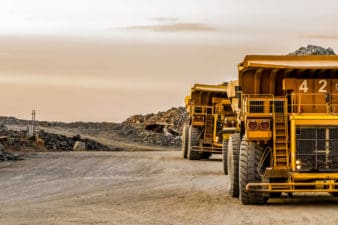According to a report in the Wall Street Journal last week, Canada is looking to create a new compensation fund for derailments involving trains carrying crude oil. The fund would be financed by a new levy of $1.65 per metric ton. In addition to that, it would require a minimum insurance coverage level for railroad operators as those carrying more than 1.5 million metric tons would be required to have a $1 billion insurance policy.
This change could have a major impact on Canada’s oil industry as it could slow down the growth of crude-by-rail and therefore derail some of the growth enjoyed by Canadian Pacific Railway Limited (TSX:CP)(NYSE:CP) and Canadian National Railway (TSX:CNR)(NYSE:CNI).
A growing worry
Due to delays in getting pipelines built, like TransCanada’s Keystone XL pipeline, Canadian oil producers have turned to the rails to move their oil. Since 2012 the amount of oil being moved by rail has quadrupled, and it’s on pace to triple from its current level to 700,000 barrels a day by the end of next year. Incidentally, that amount is basically offsetting the 730,000 barrels of Canadian oil that the Keystone XL pipeline would have carried per day if it were in service.
The problem with all of this oil being moved on the rails is that this mode of transportation hasn’t been without incident, as the amount of train derailments has surged in recent years. We’ve already seen two train derailments this month involving trains carrying crude oil; one was a Canadian National train that derailed in northern Ontario earlier this month.
In that accident, 29 of the 100 cars were involved, with many catching fire. Just days later another oil train derailed, this time in the United States, where again several cars caught fire. While these derailments were minor, the risk of additional derailments continues to grow, along with the question of who pays for the cleanup.
Paying for the cleanup
While most recent derailments have been minor, that hasn’t always been the case. We need to look no further than the 2013 derailment in Quebec that resulted in 47 people losing their lives after a train derailed and exploded in the middle of the town of Lac-Megantic. That tragedy was made worse by the fact that the train’s owner had just $25 million in insurance coverage. The disaster cost upwards of $409 million, leaving the Canadian government on the hook for $155 million so far.
In order to offset the growing risk, Canada is looking to new solutions, including a compensation fund of $250 million, that will help to offset any costs that aren’t covered by insurance. However, by adding to the cost of shipping oil by rail, Canada could also make shipping by rail a less appealing option for Canadian oil producers, which have been hit hard by the plunging price of crude in recent months.
Rail shipping already costs substantially more than pipelines, but there simply isn’t enough pipeline capacity at the moment to get all of the oil out of the country and into refineries. This has the potential to squeeze the margins of Canadian oil producers even further, because it could slow down production growth and lead to less oil being shipped by rail in the future.
Investor takeaway
Shipping oil by rail has been a boon for Canadian Pacific and Canadian National. However, this growth could be derailed due to the one-two punch of lower oil prices, the added costs from insurance, and a compensation fund. Oil producers may soon decide that if oil can’t be shipped by a pipeline, then it’s not worth shipping at all. That makes it quite possible that producers will press the brakes on further production growth until either new pipelines are built or the price of oil is lucrative enough to make the added rail costs worth it.







